Dubrovnik-Neretva Students to Run Lokrum Race for Good Cause
September the 15th, 2022 - Dubrovnik-Neretva County school pupils are set to run a Lokrum race on the nearby island for a more than praiseworthy cause.
As Morski writes, on Thursday, September the 22nd, 2022, a promotional race for high school students from the wider area of Dubrovnik-Neretva County will be held on the island of Lokrum which lies a mere 600 metres from the City of Dubrovnik's shoreline.
This Lokrum race is part of a public campaign with the purpose of raising overall public awareness of the unacceptability of violence, and it is being carried out as part of the wider Josip's Home (Josipov dom) project, which seeks to ensure a strong system of support for female victims of violence and domestic violence.
Dubrovnik-Neretva County is otherwise is the holder of the aforementioned project, which is being co-financed by the European Social Fund as part of the Effective Human Resources Operational Programme.
The partner on the project is Caritas of the Diocese of Dubrovnik, and it was secured more than 11 million kuna in grants in order to establish a proper support system for female victims of violence and domestic violence within the home and family. The implementation of this project includes the aforementioned campaign, the reconstruction and equipping of a facility that will serve as a shelter for victims of violence, and the education of experts working with those victims.
The date set for this Lokrum race is no coincidence either, as September the 22nd is the National Day of Fighting Violence against Women.
The Lokrum race will be held on the island on the aforementioned date and will begin at 11:30.
For more, make sure to check out our dedicated lifestyle section.
Adriatic-Ionian Highway to Pass through Trebinje, Not Dubrovnik?
February 14, 2022 - Is the regional branch of the Adriatic-Ionian highway going through the hinterland, from Pocitelj to Aranđelovo near Trebinje and completely bypassing Dubrovnik and Croatia?
While there is euphoria in Croatia about the imminent launch of the Peljesac Bridge, the first neighborhood Public Company, FBiH Motorways, has just announced a public call for a preliminary and main project of the Adriatic-Ionian Corridor, section Stolac - Interregional junction Pocitelj, about 23 kilometers long, reports Dubrovacki Vjesnik.
This news would not be so crucial for Croatia if it did not lead to a new possible traffic (dis)connectivity problem for Dubrovnik-Neretva County. And it has people wondering if Pocitelj is becoming the central hub from Trieste to Greece, and the new Peljesac bridge just a local bypass?
After 20 years of waiting for the road junction, no one on this side of the border wants to think that the Peljesac Bridge and access roads could 'lose out' if the regional branch of the Adriatic-Ionian highway goes through the hinterland, from Pocitelj to the endpoint Aranđelovo near Trebinje on the Montenegro border and completely bypasses Croatian territory.
So far, the Adriatic-Ionian traffic route has been talked about as a benefit for the traffic-isolated south, primarily due to the completion of the Peljesac Bridge and the expected passage of the highway through the Neum area.
Whether our largest infrastructure project will fit into this mold should be more apparent after March 15, when the deadline for applications from contractors interested in building the Stolac-Pocitelj section expires. The contractual value of the documentation is estimated at 6 million convertible marks without VAT, and the planned completion date is 18 months. The designers see the beginning of the route in Pocitelj as a connection with the Pan-European Corridor Vc (from Venice to Kyiv). In addition to Stolac and Capljina, it would include Ravno, Ljubinje, Trebinje, and further towards Montenegro, without a visible connection with Croatia.
However, in Croatian professional and political circles, they do not believe that the Peljesac Bridge will remain marginalized on the future road route.
On the topic of road construction in the hinterland, Dubrovnik-Neretva County Prefect Nikola Dobroslavić points out:
"Each state is thinking about how to connect its territory, so we do not want to comment on these intentions and moves of our neighboring BiH and the Federation of BiH. As for the Republic of Croatia, it is planned to connect the extreme south of Croatia by highway from the Metkovic junction to Osojnik with an exit to BiH (as part of the Adriatic-Ionian highway), the expressway Zračna Luka - Dubrovnik - Osojnik, and the expressway Brijesta - Perna. This is stated in Croatia's National Development Strategy and all spatial plans of Dubrovnik-Neretva County and supported by the conclusions of the Government at the session in Dubrovnik in 2019," said Dobroslavić and reminded that for all the listed planned roads, study documentation is being prepared from Hrvatske ceste, i.e., Hrvatske autoceste, and realization is expected.
Last year, at the seminar of the Croatian Engineering Association and the Society of Civil Engineers in Zagreb, Dobroslavić reiterated that the position of Dubrovnik-Neretva County has always been to connect the extreme south of Croatia to the motorway network as strongly as possible.
"We must do it quickly to benefit our fellow citizens and tourists, but these are, let's not forget, geostrategic solutions for the Republic of Croatia. We see instabilities around us, and we need to think about ourselves and our security. Therefore, the only possible connection of Croatia is by a highway, which in our opinion should be the Adriatic-Ionian highway that passes through Dubrovnik-Neretva County," said Dobroslavić.
The position of the Ministry of the Sea, Transport and Infrastructure in the field of road construction towards the southernmost county is also unequivocal:
"Southern Croatia must be connected by highway after constructing the Peljesac Bridge. Therefore, this part of Croatia deserves to be the largest construction site in the road segment. Apart from the Peljesac Bridge and the highway to Dubrovnik, one of the biggest segments must be the connection of Dubrovnik Airport with the City of Dubrovnik. We are also planning to reconstruct the Peljesac road with the Orebic bypass with a new ferry port in Orebic," said the State Secretary at the Ministry Tomislav Mihotić last autumn at the same meeting in Dubrovnik.
Croatian Motorways, meanwhile, has intensified talks on building 47 kilometers of motorways with another 14.7 kilometers of connecting roads from the Metkovic junction to the Dubrovnik (Osojnik) junction at the cost of 1.2 billion kuna.
The highway project from Metkovic to Dubrovnik was divided into two sections. The first section is the Metkovic - Peljesac junction - Duboka junction, about 22 kilometers long, which includes the construction of 17.5 kilometers of motorways from Metkovic to the Peljesac junction and 4.45 km of highway from the Peljesac junction to the Duboka junction.
The second section would go from the Rudine junction to the Osojnik junction and include the fast road from the Ston junction to the Doli junction (5.5 km) and the connecting road Slano junction to DC8 (4.7 km). The motorway section from the Rudine junction to the Osojnik junction is 29.5 kilometers long and includes constructing a connection between the Rudine junction and the existing road network.
According to HAC, these two motorway sections will continue on the access highways on Peljesac and the Peljesac bridge.
However, domestic road construction experts find it difficult and reluctant to talk about projections for the future because they have repeatedly proved ungrateful. However, it is enough for the layman to remember that the complete profile of the highway includes four lanes, which is not feasible due to the narrowed territory in the extreme south. It isn't easy to go with much narrower roads.
Minister of Transport Oleg Butkovic commented on his visit to the City of Dubrovnik two years ago about the strategic project of the expressway to the Dubrovnik Airport and explained why everything still stands:
"We are currently investing 6.7 billion kuna in transport infrastructure; these are large infrastructure projects. We cannot do all projects at the same time. The project is announced, and we will make it when the project and study documentation is ready, done, and finished, and it will be a candidate for the next operational period. We are completing the Peljesac Bridge, the Airport, and of these big projects, this will be the next one we will work on. There will be no problems; the expressway will relieve the state road. The D8 road is congested, and there must be a relief," said Butković.
For more news in Croatia, follow TCN's dedicated page.
Jet2 Flights to Dubrovnik Airport Extended through End of October!
August 21, 2021 - Jet2 flights to Dubrovnik Airport have been extended from London Stansted and Manchester until the end of October.
Dubrovnik Airport is currently connected to about 50 international destinations with about 40 carriers. The traffic intensified in August, and all airlines increased the number of flights, including from British low-cost leisure airline Jet2.com, which announced that they were extending the season to Dubrovnik Airport, reports HRTurizam.
"Dubrovnik - sightseeing and island-hopping adventures through the day give way to evenings of waterfront wining and dining. Dubrovnik’s Old Town takes centre stage, with its network of ancient alleys, pretty piazzas, and terracotta rooftops all wrapped up in grand stone walls. Out of town, emerald islands and secluded coves await. All of this has resulted in increased demand, and in response, Jet2.com and Jet2holidays have made the following additions:
- Manchester – season extended until the end of October, with three weekly services operating until then, including Saturday and Sunday flights.
- London Stansted - season extended until the end of October, with three weekly services operating until then.
- Flights and holidays also available to Dubrovnik from Birmingham, Edinburgh, Leeds Bradford and Newcastle in Summer 21," writes Jet2 in an announcement on August 21.
Visitors from the United Kingdom are traditionally among the top 5 visitors in Dubrovnik-Neretva County and the City of Dubrovnik. From July 1 to August 17, they realized 114,622 overnight stays.
"The Dubrovnik-Neretva County Tourist Board independently launched a media campaign in the United Kingdom in late July and early August, and in cooperation with Jet2.com, a campaign was launched to promote destinations throughout our county. If the epidemiological picture continues to be favorable, we can expect visitors from the United Kingdom to achieve good results in 2021. We hope that the extension of flights will enable even better results from this significant market for us," states the Dubrovnik-Neretva County Tourist Board.
Dubrovnik achieved one million overnight stays. The most numerous guests are from the United Kingdom.
According to the eVisitor tourist check-in and check-out system, one million overnight stays were realized in Dubrovnik from the beginning of the year to August 16, 2021, which is an increase of 87 percent compared to 2020. In the same period, in 2020, there were 276,178 arrivals, which is an increase of 73 percent.
From January 1 to August 16, 2021, most tourists in Dubrovnik were from France, the USA, Croatia, Germany, the United Kingdom, Poland, Russia, Bosnia and Herzegovina, the Netherlands, and Ukraine. Furthermore, most tourists were from France, the United Kingdom, Germany, the USA, Croatia, Russia, Poland, the Netherlands, Spain, and Italy in the first half of August. Currently, in August, most guests in Dubrovnik are from the United Kingdom, followed by guests from France, Germany, the USA, Russia, Italy, Croatia, Poland, the Netherlands, and Spain.
Follow the latest flights to Croatia HERE and the latest travel updates and COVID-19 news from Croatia HERE.
For more, make sure to check out our dedicated travel section.
Project SeaClear: Autonomous Robotic System to Collect Waste From Ocean Floor
June 10th, 2021 - An Autonomous robotic system, Project SeaClear, will collect waste from the ocean floor, and the first tests will be conducted in Dubrovnik-Neretva County.
Every year on June 8, the United Nations celebrates World Ocean Day, in which many countries join them, including Croatia. European projects also contribute to conservation, including the SeaClear project in the Dubrovnik-Neretva County, implemented by the DUNEA Regional Agency and the University of Dubrovnik, as the only Croatian project partners.
Metković News reports, marine litter is currently one of the biggest global problems because, apart from the environmental negative impact, it poses a huge risk to human health in general, with huge economic consequences. Today, there are more than sixty million tons of waste in the world's oceans, of which approximately more than ninety percent are on the seabed.
The system, unique in the world, which will be developed through the SeaClear project, explained Professor Bart De Schutter from the Center for Systems and Control of the Technical University of Delft, which is also the project holder. "Currently divers clean this waste from the seabed, especially in tourist areas. However, this is an expensive solution and can sometimes pose a danger to divers", explains De Schutter.
"The SeaClear system works as follows; we have a surface vessel and two underwater robots. A slightly smaller robot is an observation robot. It scans the seabed with a camera and sonar. This robot maps where the waste is and what kind of waste it is. The robot can also distinguish waste fractions from living things, such as fish and seaweed. To accurately distinguish between animate and inanimate worlds, advanced algorithms are used. After the observation robot recognizes the waste, it sends this data to another underwater robot equipped with a gripper. This robot goes to the identified waste fraction, picks it up with a grapple, and puts it in a large basket. The handle is designed with a special safety structure, so the fish can easily escape if it is accidentally picked up", explains De Schutter.
"The gripper was the most difficult hardware component to develop, but even that is now ready. Researchers at the Technical University of Munich have constructed a prototype, so now we can really start testing the whole system,” says De Schutter. These features will be displayed in three pilot areas where an autonomous robot system will be installed: one system to clean the port in the port of Hamburg with the end-user of the Hamburg Port Authority (Germany), the second in the tourist area of Dubrovnik, near the island of Lokrum and the third on the area of Mali Ston Bay which is an area from the mariculture sector. The first tests are planned for September in the pilot areas of Dubrovnik-Neretva County, and various components of the system will be tested in real conditions.
The SeaClear project, full title "Search, Identification, and Collection of Marine Litter with Autonomous Robot," aims to develop autonomous robots for cleaning waste from the seabed and is funded in one hundred percent by HORIZON 2020. The project provided more than six million for the area of Dubrovnik-Neretva County, and the Regional Agency DUNEA and the University of Dubrovnik are the only Croatian partners.
For more, follow our news section.
Dubrovnik-Neretva County Wineries Moving Into the Spotlight
April 11, 2021 - Famous for its stunning landscapes, incredible history, and delicious gastronomy, Dubrovnik-Neretva County wineries are also moving into the spotlight.
The county consists of the only river delta in Croatia, with fertile colorful grounds, delicious gastronomy, and some of the largest vineyards in the whole of Croatia. Some of the most famous wines in the country come from Dalmatia and more specifically Dubrovnik-Neretva County such as Plavac Mali and Pošip. With over 130 autochthonous varieties of wine in Croatia, it's clear why people from all over the world enjoy the local wine.
One of the most famous visitors to the Dubrovnik-Neretva wine region is Boris Johnson, prior to his promotion. He came to Croatia for a quiet getaway with his family and said "nothing can compare to the beauty of Croatia". The family stayed in a hidden villa in Stolovi, which among other things is famous for its wine production! Upon his return, the Prime Minister wrote about his positive impression of Croatia in a column for the Telegraph. Johnson wasn't shy to admit that the red Dingac, known as Croatia's best red wines, was his favorite.
The first and famous Neretva vineyards which visitors can enjoy the view from the Magistrala road from Opuzen to Dubrovnik were planted in the 18th century. Some of the most popular wineries in Dubrovnik-Neretva County are located on the Pelješac peninsula, as well as in Stolovi, Komarna, and Opuzen. The Meditteranean climate makes the perfect surrounding for quality vine cultivation. On average, the county gets around 2700 hours of sunshine, so you get to enjoy a glass of wine or more with breathtaking views and sunshine!
Rizman
The family-owned winery dates back to the 20th century when the first vineyards were planted by the great-grandfather of today's generation of the Štimac family. Over the years, the family has established 22 hectares of vineyards in Komarna, known as the youngest winegrowing area in Croatia. The winery build meets the highest technological standards for the production of wine and 90% of vines belong to the indigenous varieties of Plavac mali and Pošip, together with the somewhat forgotten variety of Tribidrag.
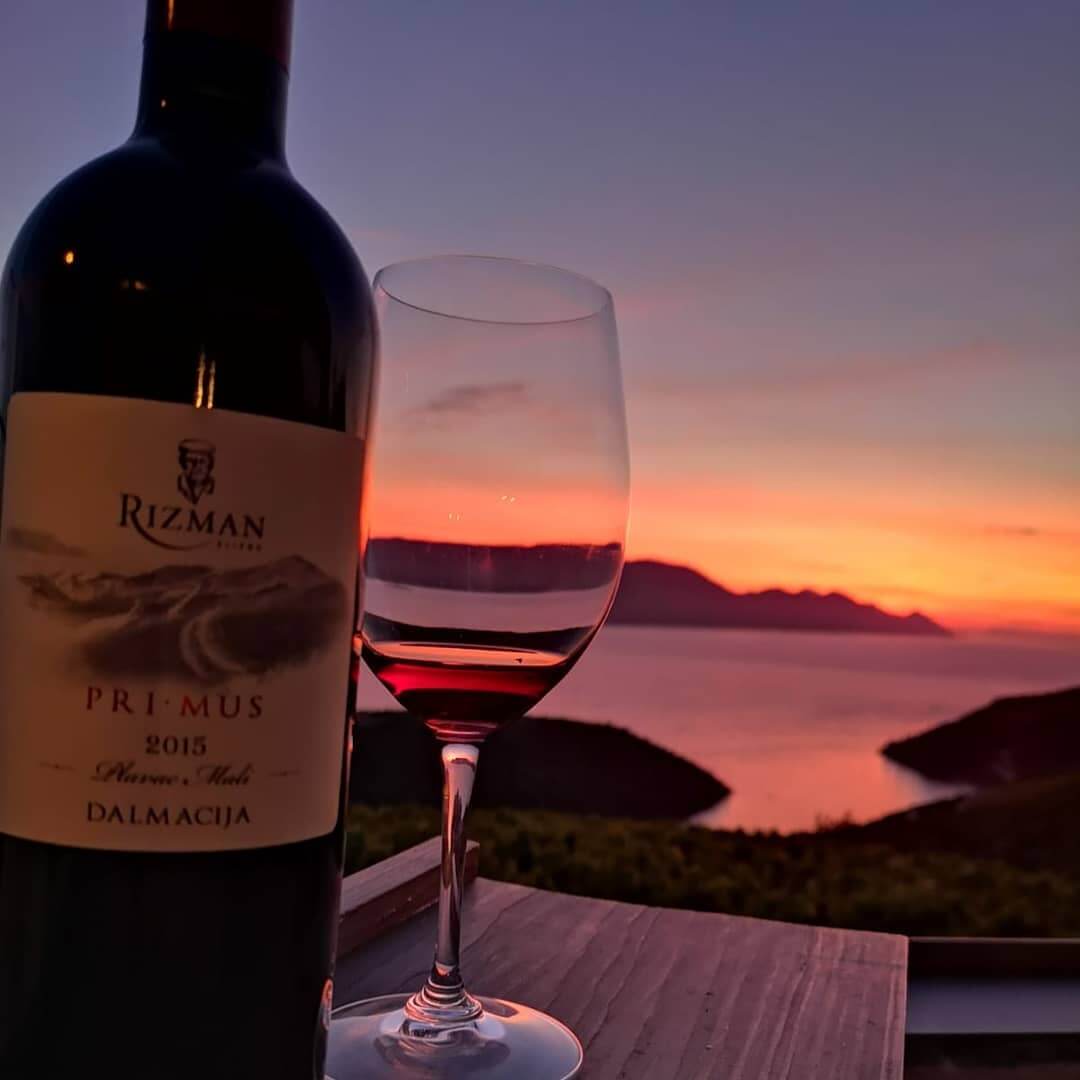
Rizman Winery | Rizman Winery Facebook
In case you aren't able to visit the winery, the Rizman rest stop is located just on the side of the Magistrala road on the way to Dubrovnik. But in case you do get to visit, you will not only be able to enjoy some of the best wines Croatia has to offer, but you'll also get to experience breathtaking views of Dubrovnik-Neretva County,
Terra Madre
One of the youngest wineries in the Dubrovnik-Neretva County, with the first vines planted only 13 years ago, in 2008. Since then the winery has gained the prestigious certification for their ideal conditions in an ecological way since the opening in 2013. Terra Madre wines have won a total of 16 prestigious awards, and the one that stands out, in particular, is the Dubrovnik Festiwine Gold Medal. "This award was especially dear to our hearts because it is practically the first competition in our county."
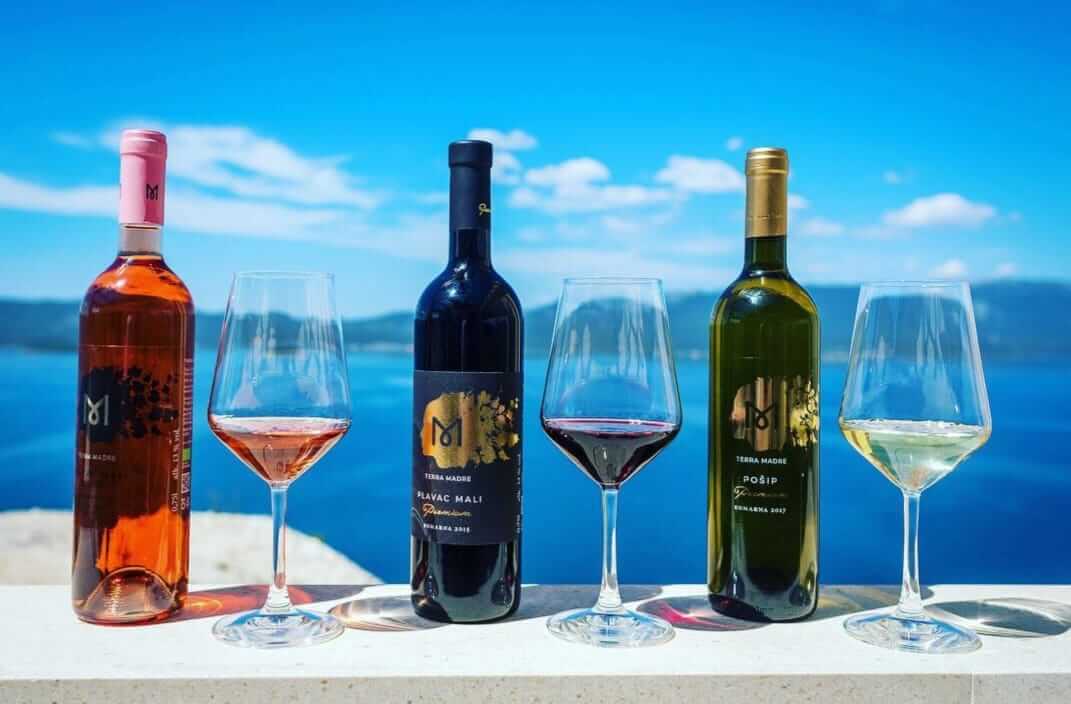
Terra Madre Winery | Terra Madre Winery Facebook
In 2019, Terra Madre won the Decanter silver medal for their Plavac Mali premium vintage 2016 production. The award came from a prestigious wine competition in London, UK. The winery itself is located in a stunning location with a view of the Adriatic sea. Nothing else matters when you're sipping on an award-winning glass of wine while looking out at the horizon.
Vina Deak
With its unique location in Opuzen, the family-owned winery only got started in the wine business about 10 years ago. Their vision is to combine the tourist offer with the autochthonous products of the Dubrovnik-Neretva region. With their location, Vina Deak offers a lot more than just wine tasting, they offer a whole experience. In 2020, Vina Deak received two awards for their prestigious wines, a silver and a bronze medal in the Decanter World Wine Awards!

Vina Deak | Vina Deak Facebook
If you aren't able to visit the winery, make sure to stop at the Deak Wines Rest Stop on the way to Dubrovnik! Visitors have the ability to book daily excursions to explore the Neretva Valley and nearby towns, homemade olive oil tasting, photo safari down the river delta, picnics, and lots more. Their luxurious villa in Stolovi looking over the horizon is Boris Johnson's secret vacation hideaway!
Vinarija Edivo
Have you ever experienced an underwater winery? Located in Drače, a small village nearby Ston, Vinarija Edivo wanted to create a unique experience for wine lovers. They came up with the idea of immersing bottles and amphorae under the Adriatic Sea, around the Pelješac peninsula. Today, their creation is called The Sea Mystery, the first underwater winery.

Grgo Jelavic/PIXSELL
Besides tasting the unique product of love, effort, and time, licensed scuba divers can also take a tour of the underwater winery to get the full and possibly once-in-a-lifetime experience! "Everything is pure Croatian product, one that you will want to take it with you: product with a story that belongs to our land, that people will definitely talk about."
For more on travel in Croatia, follow TCN's dedicated page.
Indigenous Croatian Species Congeria Kusceri Up For 'Mollusc of the Year'
January 20, 2021 – Let's be honest, Croatia has a lot more photogenic inhabitants than this. But, from over 120 molluscs registered, the indigenous Croatian species Congeria kusceri have been chosen as one of the top five finalists in this year's Mollusc of the Year competition.
There's actually quite a good reason why Congeria kusceri isn't so photogenic – it lives underground. In fact, Congeria kusceri comes from the Congeria genus, which are the only known freshwater underground shellfish in the world. Most of this genus has sadly become extinct. However, three members of the family survive in this region - Congeria jalzici which can be found in Slovenia, northern Velebit and northwestern Lika, Congeria mualomerovici which lives in the Sana basin in Bosnia, and Congeria kusceri which is endemic to underground cave systems of the Neretva and Trebišnjica basins in Herzegovina and southern Dalmatia. Although, that wasn't always the case.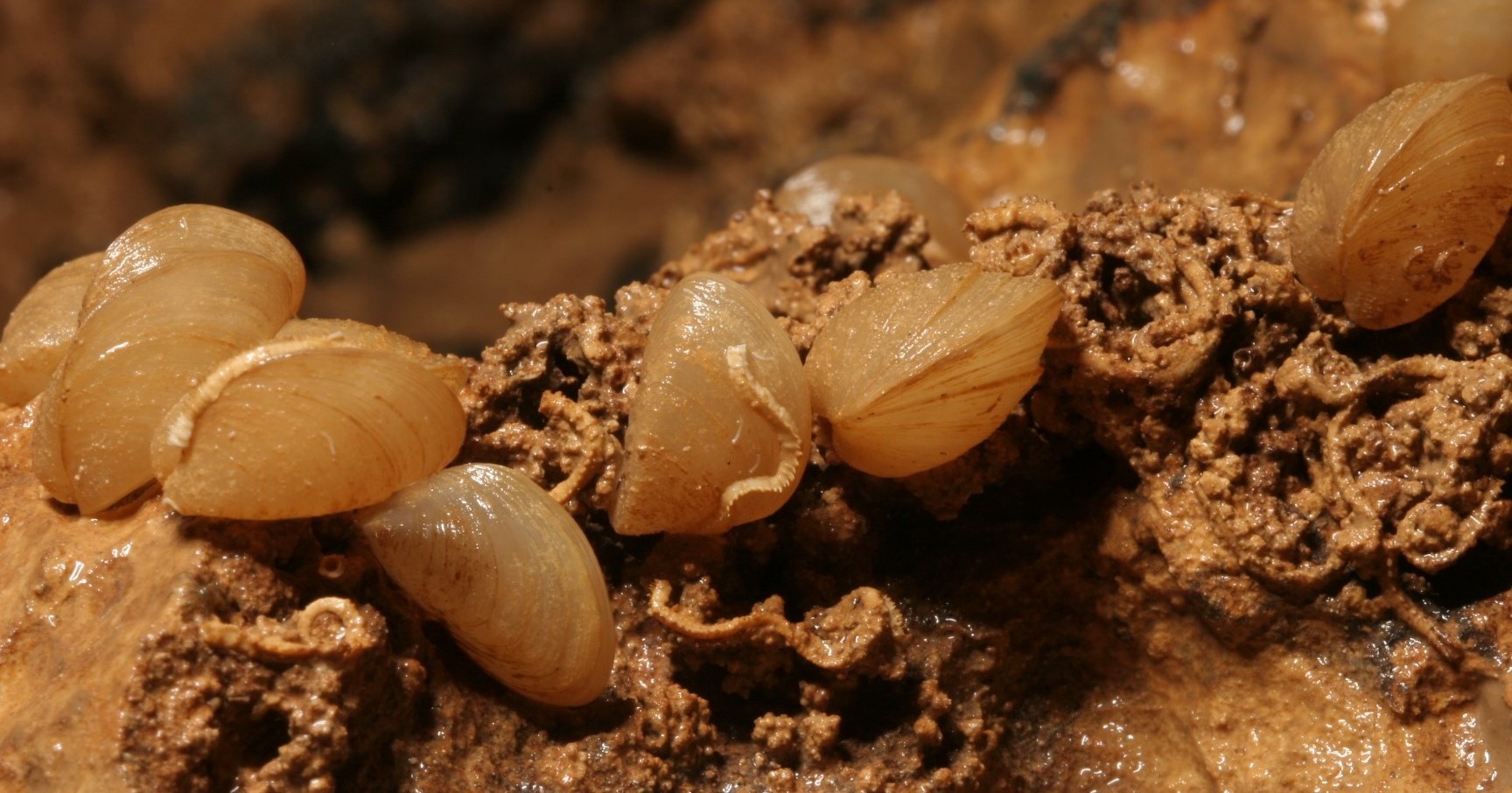 Congeria kusceri are albino molluscs, having lost their pigmentation while living away from sunlight. They live in southern Dalmatia, whose strongly supported football club, Hajduk Split, are also associated with the colour white © The Croatian Biospeleological Society (CBSS)
Congeria kusceri are albino molluscs, having lost their pigmentation while living away from sunlight. They live in southern Dalmatia, whose strongly supported football club, Hajduk Split, are also associated with the colour white © The Croatian Biospeleological Society (CBSS)
The ancestors of these molluscs used to live on the surface of lakes. Some of the molluscs followed the flow of water downstream and ended up inhabiting cave systems underground. Those which were able to adapt to a life of complete darkness survived. Having existed for so long in such a sunless environment, Congeria kusceri have lost their pigmentation - another reason we might consider them unphotogenic.
Congeria kusceri is on the Croatian Red List of Cave Fauna, in the category of critically endangered species, and at the European level, it is protected by the Directive on the Protection of Natural Habitats and Wild Fauna and Flora of the European Union. It is extremely rare. To date, these molluscs have been found in only fifteen underground locations of the Dinaric karst region.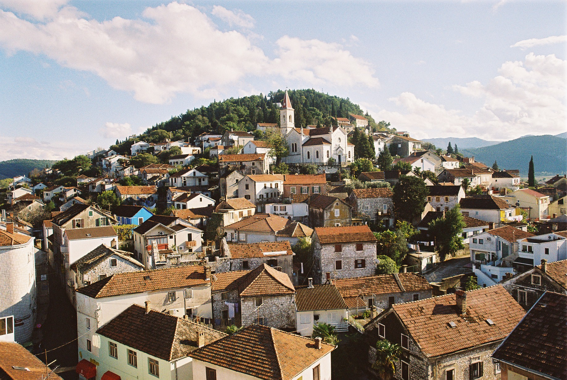 The Predolac hill in Metković © Jure Grm
The Predolac hill in Metković © Jure Grm
The largest living colony of Congeria kusceri that we so far know about can be found at the foot of the Predolac hill in Metković. Congeria kusceri is around two centimetres in length. Once part of a flourishing mollusc family, most of the Congeria genus died out around five million years ago. The genus was considered to be entirely extinct until shells of recently deceased individuals were found near Vrgorac in 1934. Congeria kusceri's new cousins - Congeria jalzici and Congeria mualomerovici – were only described and recognised as distinct sub-species as recently as 2013.
The Mollusc of the Year competition is run by the Senckenberg Research Institute and Museum, and the Centre for Translational and Genomic Biodiversity (TBG) in Frankfurt. Congeria Kusceri's success in being chosen as one of the finalists was announced by the Ruđer Bošković Institute in Zagreb.
Voting for Mollusc of the Year is open to the public. Anyone who is not too shellfish with their time and who may wish to support this endangered Croatian underdog in the competition can vote here
Croatia Filming Locations Are Best Again As Succession Bags 7 Emmys
September 23, 2020 – Following incredible success with Game Of Thrones, Mamma Mia and others, Croatia filming locations prove to be the best again as HBO's Succession wins 7 Emmys
Historic Dubrovnik was always pretty enough to attract people from far and wide. Dubrovnik has a lot of sights to visit. In addition, it offers many activities such as hiking, cycling, sailing, boat ride, Seabob experience etc. But, following its appearance in TV show Game Of Thrones, interest in visiting the walled city went through the roof. Tourists were not the only ones who wanted to come.
HBO drama Succession is just the latest hit to take advantage of the spectacular scenery while filming in Croatia. The show has just bagged no less than seven prestigious Emmy awards for the season partially filmed in Croatia. In the drama series category, it picked up Emmys for Best Leading Male Role, Best Guest Role, Best Casting, Best Directing, Best Screenplay and Best Picture Editing.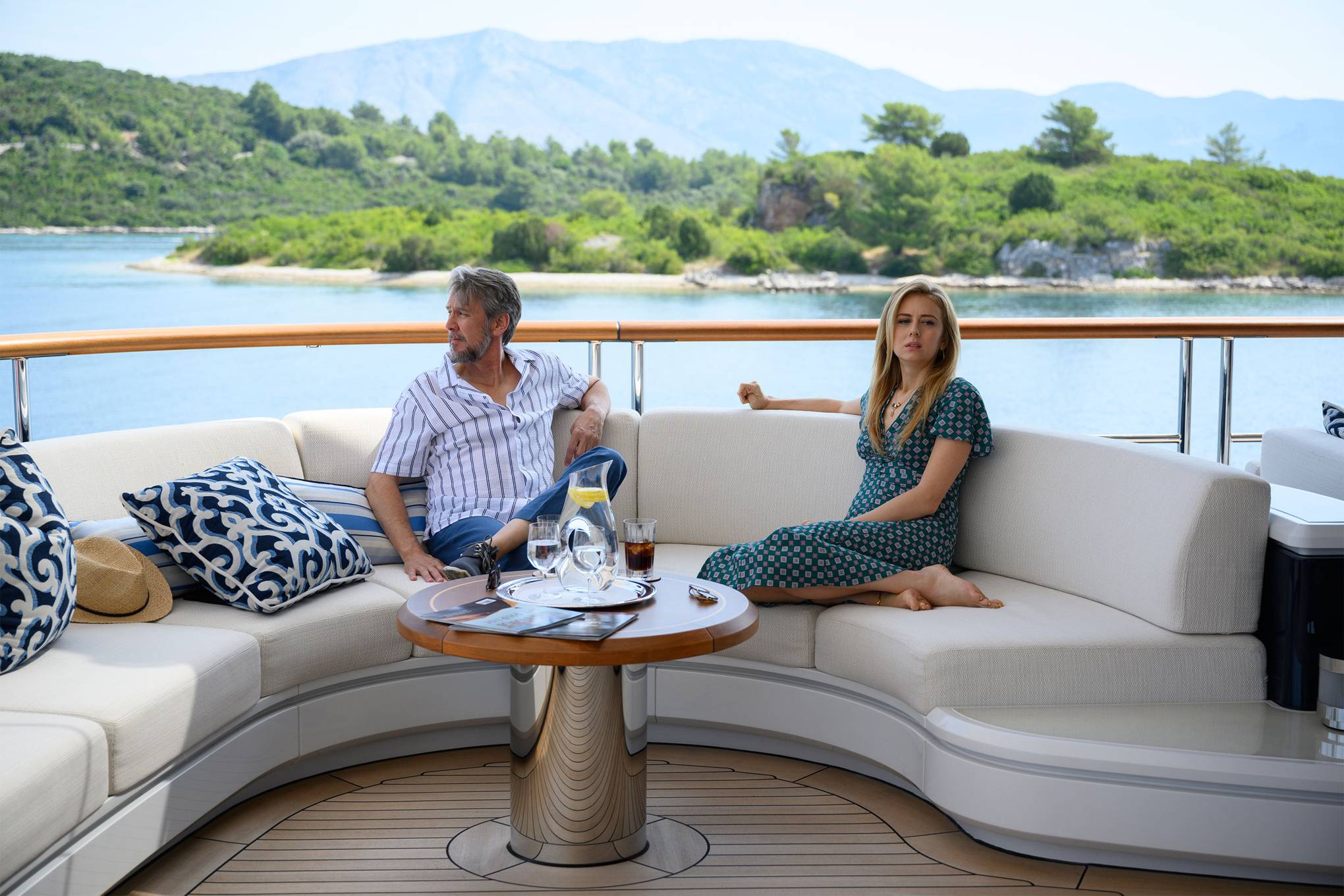 Cast members filmed aboard a yacht with beautiful Croatia and its Adriatic waters as the backdrop © HBO
Cast members filmed aboard a yacht with beautiful Croatia and its Adriatic waters as the backdrop © HBO
The shooting took place over 12 days in July 2019, primarily on a yacht on which the show's central characters, the Roy family, were taking a holiday. The Croatia filming locations used were the waters around Cavtat, Korcula, Mljet and Sipan. The series ventured into more urban areas of Croatia and, for those scenes, filming locations in Zagreb and Rijeka were sourced. The German-built Solandge was the yacht used in the filming and costs as much as $1.1million (£850,000) to rent for one week.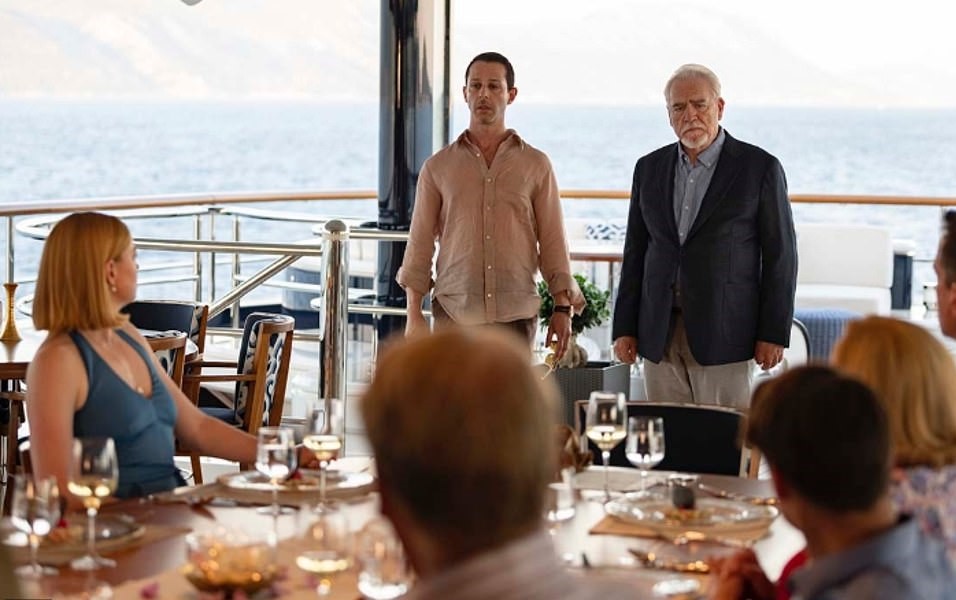 The Roy family aboard the yacht Solandge in Croatian waters © HBO
The Roy family aboard the yacht Solandge in Croatian waters © HBO
Now in its third season, Succession centres on the dysfunctional Roy family, owners of a global media and hospitality empire. It stars British actor Brian Cox as the ailing family patriarch with Kieran Culkin heading up the otherwise all-American cast. A total of 613 people worked on the shooting of Succession in Croatia, of which 595 were Croatian (161 film workers, three trainees and 431 extras).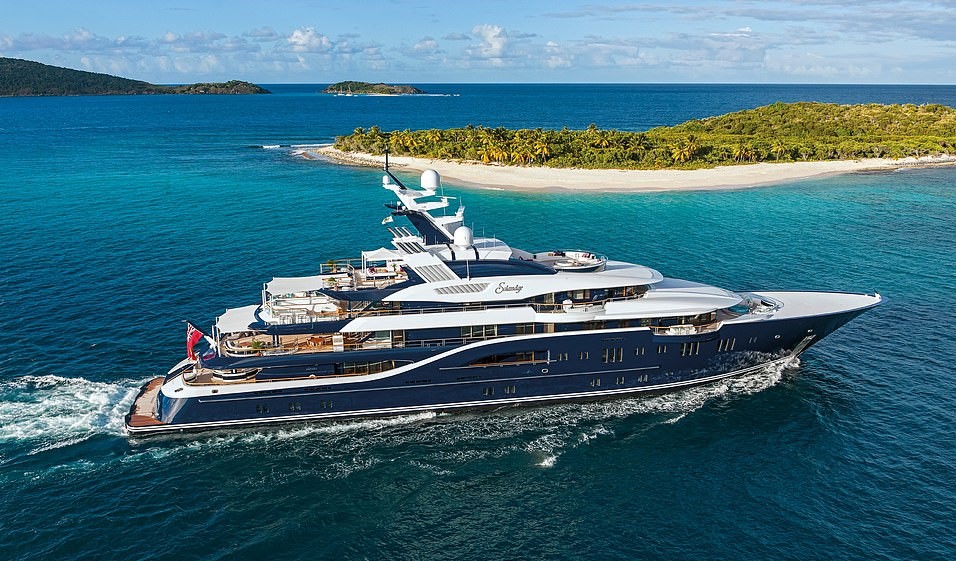 Solandge is currently one of the most luxurious yachts in the world © Moran Yachts
Solandge is currently one of the most luxurious yachts in the world © Moran Yachts
In recent years, major movies such as Star Wars, Robin Hood and one installment in the long-running James Bond series have joined the likes of Game Of Thrones and Mamma Mia in enjoying Croatia filming locations. However, filming in Croatia goes back much further than that. During the 1970s and early 1980s, no less than three Oscar-winning movies used Croatia filming locations - Fiddler on the Roof (1971), The Tin Drum (1979) and Sophie’s Choice (1982).
You can read more about filming in Croatia and Croatian filming locations by reading our dedicated section here
For the latest travel info, bookmark our main travel info article, which is updated daily.
Read the Croatian Travel Update in your language - now available in 24 languages
Join the Total Croatia Travel INFO Viber community.
Six of the Best! Croatian Protected Produce On Sale in China
September 18, 2020 – Six items of Croatian protected produce are among the 100 European items to go on sale in China
Six items of Croatian protected produce are among the 100 European items to go on sale in China. In a reciprocal deal, 100 Chinese products will also be recognised and recommended on the European market.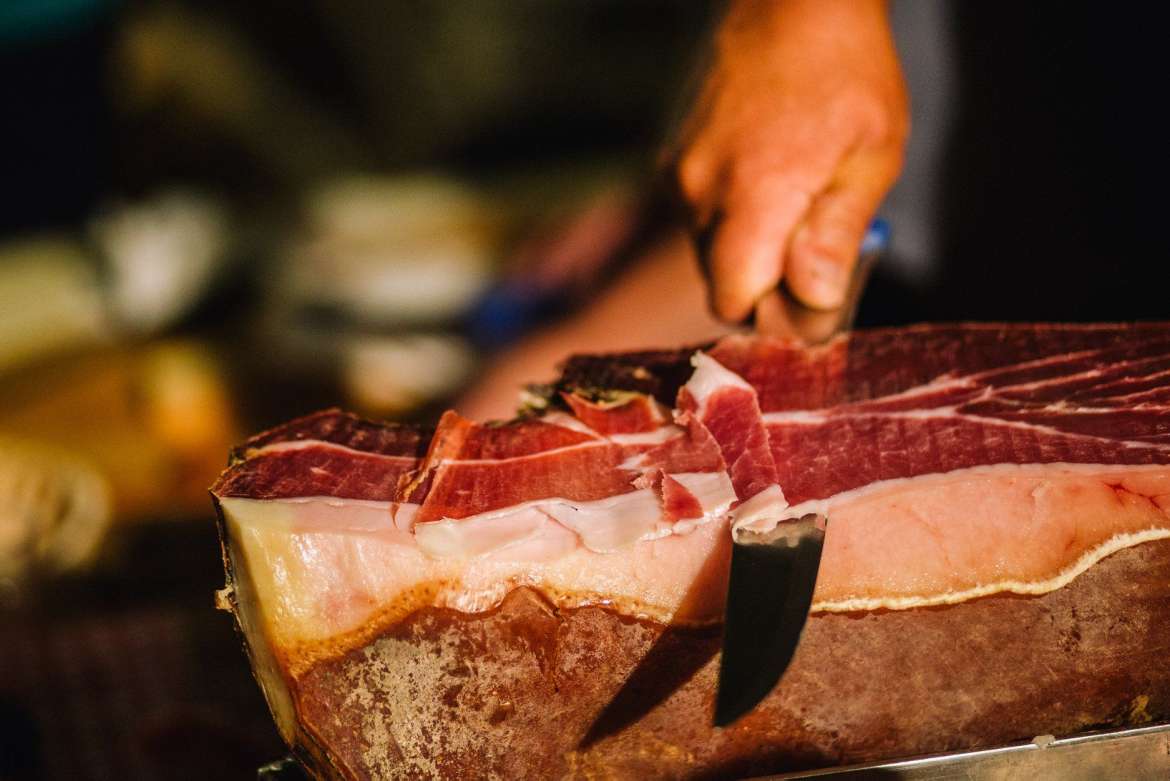 Dalmatian prosciutto © TZ Vrgorac
Dalmatian prosciutto © TZ Vrgorac
Baranja kulen, Dalmatian prosciutto, Drniš prosciutto, Lika potatoes, Dingač wine and Neretva mandarins are the premium six Croatian protected produce chosen to be among the European 100. All of the Croatian protected produce is already recognised at a national and at an EU-level and designated its status based on its unique place of origin.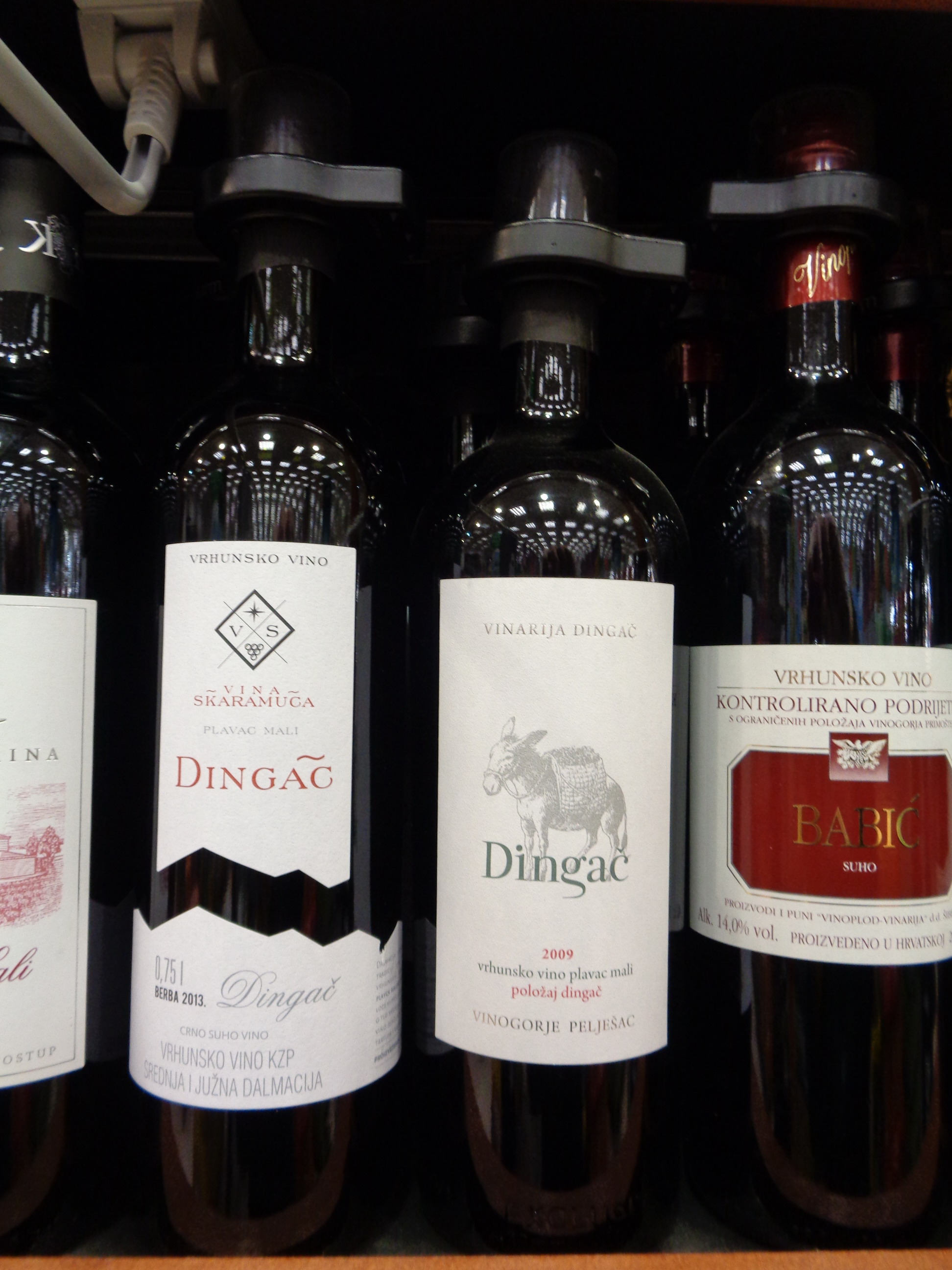 Dingač wine © Silverije
Dingač wine © Silverije Neretva Mandarins
Neretva Mandarins
The European products will be specially marked and receive special privileges when they go on sale in China. Alongside the Croatian protected produce, other items on the European list are French champagne, Greek feta cheese, Italian Parma prosciutto, Italian mozzarella, Irish whiskey and Portuguese port. On the Chinese list of products are distinct varieties of rice, bean and vegetable products, some of which will already be popular with Europeans who eat or cook Chinese cuisine.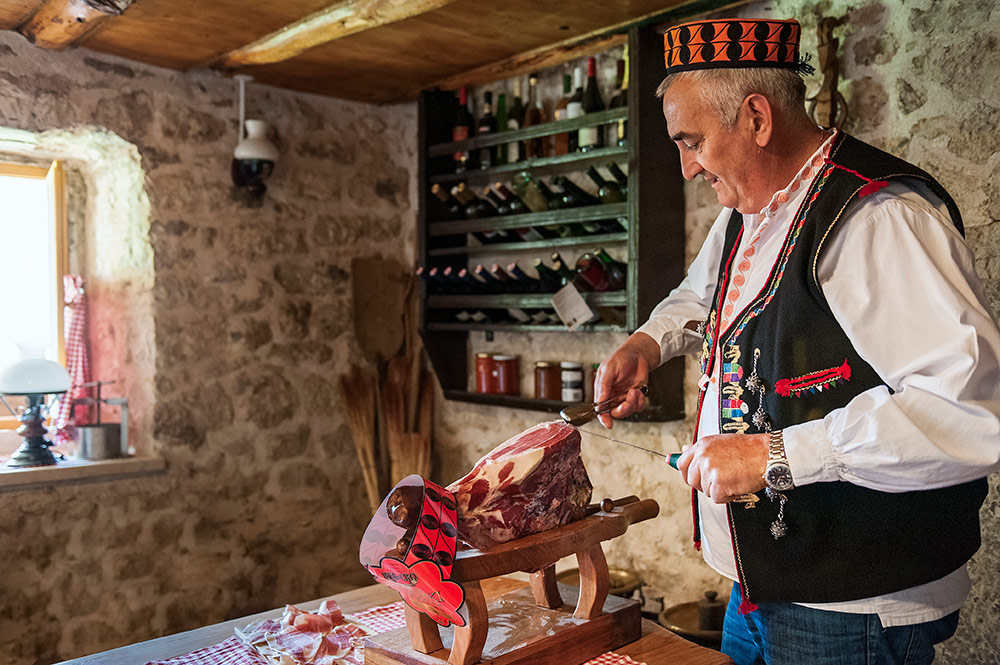 Drniš prosciutto © Tourist Board of Drniš
Drniš prosciutto © Tourist Board of Drniš
The full list of Croatian produce protected at an EU-level currently includes Istrian olive oil, Dalmatian prosciutto, Pag cheese, Lika lamb, Poljički Soparnik, Zagorje turkey, Korčula olive oil, Istrian prosciutto, Sour cabbage from Ogulin, Neretva mandarins, Slavonian honey, Drniš prosciutto, Cres olive oil, Pag salt, Baranja kulen, Bjelovarski kvargl, Varaždin cabbage, Pag lamb, Šolta olive oil, Meso 'z tiblice, Zagorje mlinci, Krk prosciutto, Lika potatoes, Slavonian kulen, Krk olive oil. Baranja kulen, featured within a traditional Slavonian platter © Romulić & Stojčić
Baranja kulen, featured within a traditional Slavonian platter © Romulić & Stojčić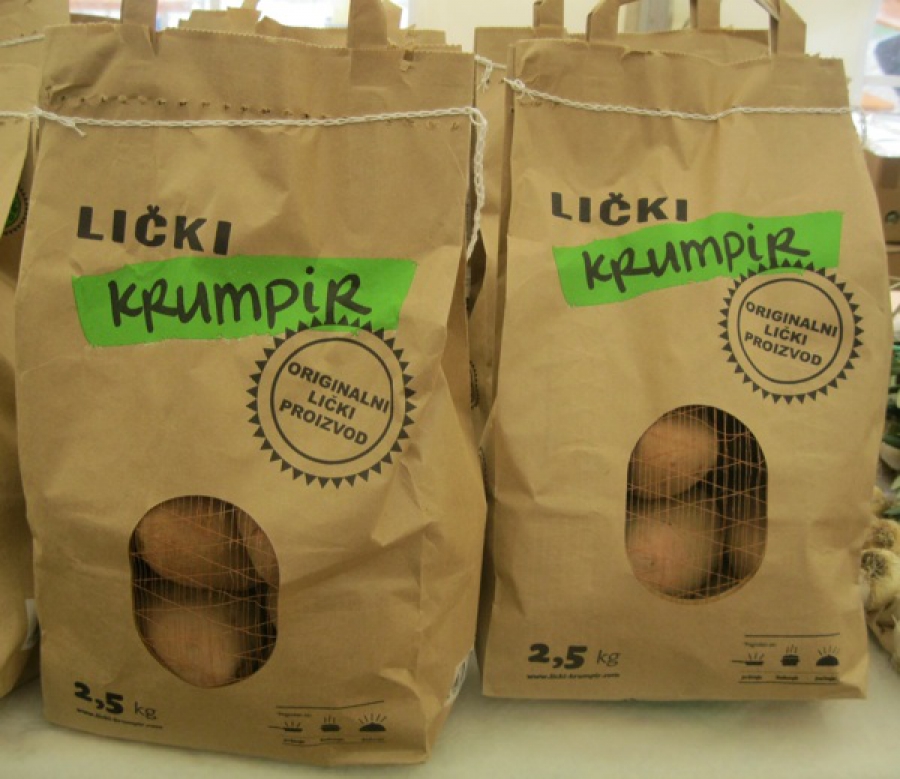 Lika Potatoes
Lika Potatoes
For the latest travel info, bookmark our main travel info article, which is updated daily.
Read the Croatian Travel Update in your language - now available in 24 languages
4000 Tons of Pelješac Bridge Leaves China on One Ship
September 15, 2020 – Construction of the Pelješac bridge continues despite the ongoing pandemic – a monster-sized shipment of bridge segments is currently on its way to Croatia
The Pacific Alert is 160 metres long and 27 metres wide. She set sail from Nantong, China on 10th September. Her cargo? 4000 tons of the Pelješac bridge.
We say 4000 tons, but, that's a slight exaggeration. The actual weight of the Pelješac bridge pieces she carries is more accurately 3,840 tons. The 13 pieces are heavy construction elements for the bridge and are expected to arrive in Croatian waters on 5th October.
This is the second such heavily loaded ship to set sail for Croatia carrying the Pelješac bridge parts, which have been constructed in China. The first ship with Peljesac bridge segments arrived in February this year, but production in China was thereafter halted due to coronavirus. The recent arrival of 100 Chinese welders who will connect the Peljesac bridge segments, and the resuming of production in China, indicate that the project is back on track despite the ongoing pandemic.
The Peljesac bridge will connect south Dalmatia to the rest of Croatia and will negate crossing the time-consuming Bosnian border to reach Dubrovnik. This will improve southern Croatia's accessibility to road users. The region of Dubrovnik and Neretva has in 2020 suffered worst from a fall in visitor numbers because it is mostly reliant on charter flights and large cruise ships. The activities of airlines and such ships has been curtailed by coronavirus.
The Pacific Alert is a general cargo ship that was built in 2010 and is sailing under the flag of Cyprus.
For the latest travel info, bookmark our main travel info article, which is updated daily.
Read the Croatian Travel Update in your language - now available in 24 languages
Dubrovnik-Neretva County Proposes New Measures, Capak Expects Same from Other Counties
August 28, 2020 - After new measures were introduced in Split-Dalmatia County, Dubrovnik-Neretva County asks for the same.
Index.hr reports that on Thursday, the Dubrovnik-Neretva County Headquarters proposed to the National Headquarters the adoption of measures, including limiting the number of participants in weddings, funerals and commemorations to 50 people, while celebrations can only be organized with families of up to 20 participants.
In addition, performances, religious ceremonies and other facilities should be held in addition to all epidemiological measures if they are outdoors, and if they are indoors, a mask should be used and kept at a distance of two meters.
The organizers of the gathering and the owners of the catering facilities are responsible for the implementation of the measures and must implement them more intensively, and the local civil protection headquarters are also in charge of that.
The measures would apply from Monday, August 31, for a period of 14 days.
The Chief of the County Headquarters, Josko Cebalo, expects that the National Headquarters will accept the proposal and make a decision on Friday.
"The goal is to protect the health of the population and preserve the economy, primarily the tourist season. In our county, more than a quarter of tourist traffic occurs before and in the post-season, so it is important to maintain a stable situation so that the season lasts as long as possible," Cebalo explained.
He noted that the measures were supported by representatives of chambers of commerce and crafts.
"With the opening of the economy and the start of the tourist season, we expected higher risk of increasing the number of infected. Experience has shown that larger gatherings, family and weddings and public events, are potential hotspots," Cebalo said.
He announced a meeting with local government leaders on Friday to discuss whether another measure needs to be proposed.
Visiting RTL Television's Dnevnik tonight, Krunoslav Capak expressed satisfaction with the increased involvement of local headquarters in combating COVID-19, because "they can most easily spot what is happening to them and where the problem is and how they can prevent further spread of the coronavirus, which is much harder to see from the National Headquarters."
"I think it is going in the right direction, except for Brod-Posavina and Split-Dalmatia counties," he said. "Today, the National Civil Protection Headquarters received additional proposals from Medjimurje and Dubrovnik-Neretva counties, and it is expected that there will be more tomorrow, after today's meetings of local headquarters of some counties, which announced the submission of their complete proposals on Friday," added Capak.
"Tomorrow, the Headquarters will carefully consider this. In any case, we will always support the local headquarters, but we must make sure that these measures must be consistent for all of Croatia," said the director of the CNIPH.
And while new measures are being announced, existing ones are still being debated. Specifically, on the closure of gyms in Split-Dalmatia County. That measure, which came into force on Thursday, has raised a lot of questions. The Voice of Entrepreneurs Association asked the Headquarters to prove that gyms are hotspots.
As a guest on RTL, Capak said that he did not know how many people in the gyms became infected.
"Look, if there is a history of someone getting infected and there is no other way than being at the gym, that would be proof. I have to admit I didn't make it, as I was out of the institution all day today, and I didn't get to talk to colleagues from Split-Dalmatia County. But I'm sure they had a reason to do what they did," Capak said.
The question, therefore, arises as to whether the National Headquarters, which accepted the proposed measures of the local headquarters, asked for more concrete evidence at all. From what Capak said, it could be concluded that they did not. Capak even says he’s sure they had a reason to do so.
Capak added that gyms and fitness centers are important for people's health.
"If we see that the situation is improving, we will recommend that this measure be opened as soon as possible because these are institutions that help us preserve and acquire health," he said.
When asked if someone was inside a nightclub, restaurant and gym, then how could you prove they were infected at the gym, Capak said it was hard to tell.
"But with a good epidemiological history, this is possible. Especially if several infected people were in one place, and they were not, say, in the same club, but were in the same place, it is possible to determine. And now I can not say whether it was like that," Capak said.
In the meantime, the Voice of Entrepreneurs are demanding that the government pay salaries and contributions to workers who cannot work because gyms are closed.
"Our message is clear. If you want to close us down or limit our business, gentlemen in the Government, then you have to pay for it, not only with measures to preserve jobs, but also with additional ones - to preserve the companies you are closing or restricting business in the name of force majeure. Without companies, there are no employees," said Hrvoje Bujas, president of the Voice of Entrepreneurs association.
For the latest travel info, bookmark our main travel info article, which is updated daily.
Read the Croatian Travel Update in your language - now available in 24 languages


